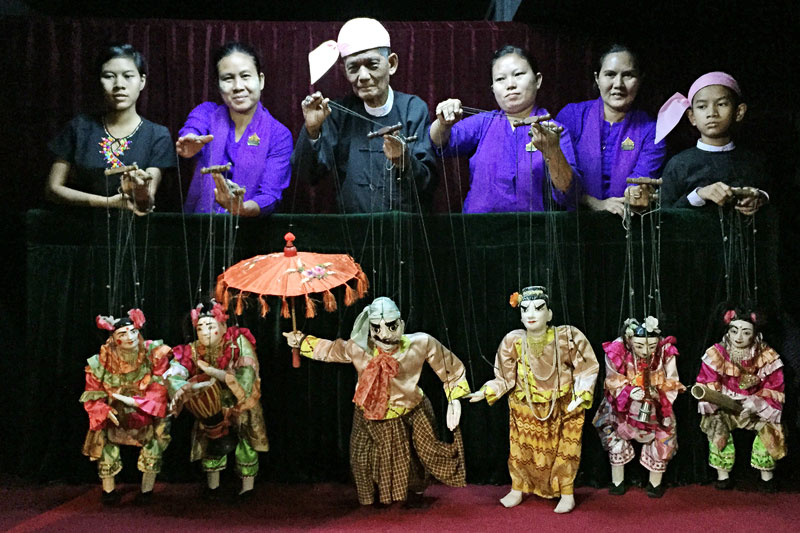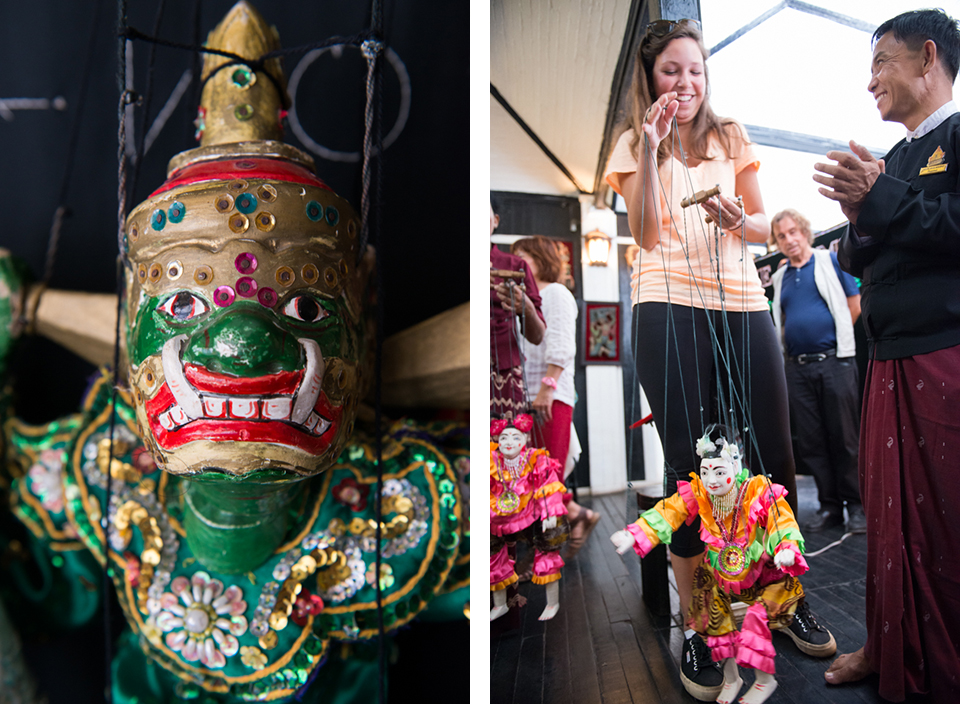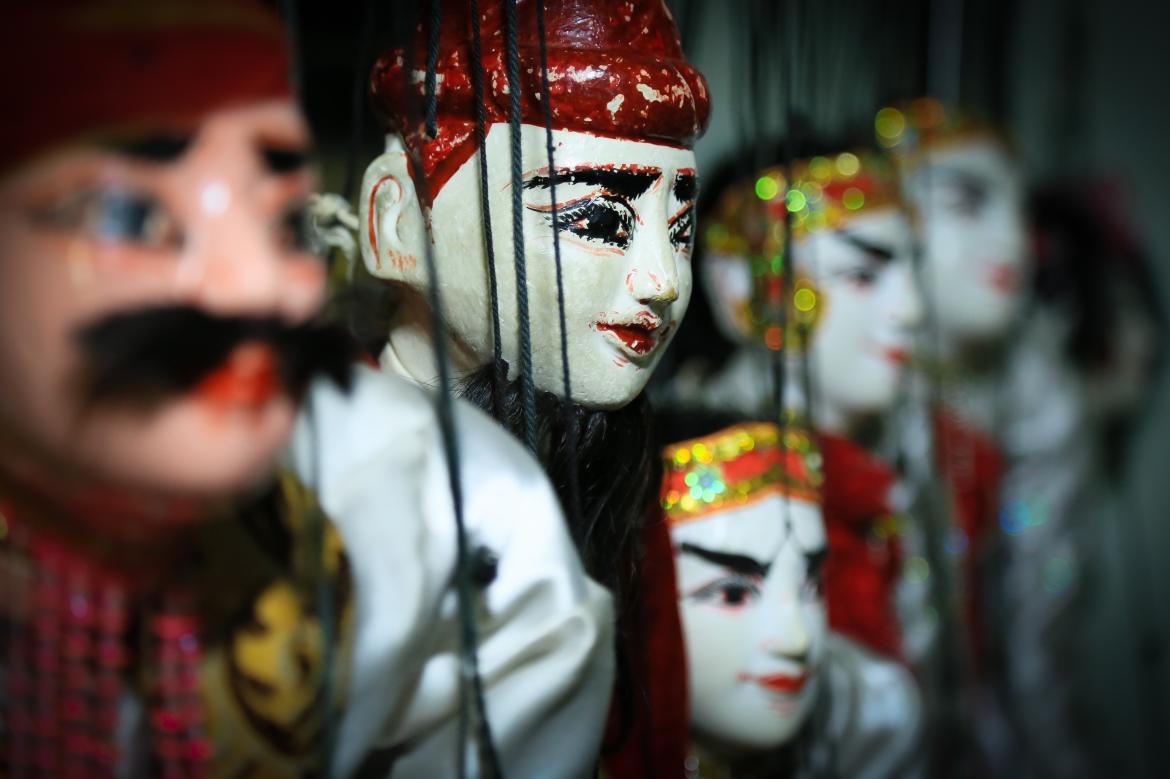Strings seem to disappear and puppets take on a life of their own. Spectators are caught up in their miniature world. The curtain lifts and we are reminded of the remarkable skills of the puppeteer.

In traditional court performances, marionettes could ‘speak’ freely where human actors could not. The small performers were used to pass on messages, warnings and grievances that would otherwise go unspoken.

In Burma puppet plays have been performed since at least the 1400s. In the 1700s, the royal court began formally to sponsor and regulate the puppet theatre. It quickly grew in prestige and popularity. At the height of its popularity between 1820 and 1885, the puppet theatre in Burma was considered superior to the live theatre, such was the degree of skill and expertise exhibited by the puppeteers. Some puppets became famous throughout the land and were instantly recognised and much loved by the people.

The puppets are marionettes, manipulated through strings controlled from above. The strings, controls and hands of the puppeteers are visible during parts of the performance;on show is the incredible dexterity of the puppeteers. A great marionette performance could allow spectators to enter the world of the puppets and to forget that the little figures were not in fact human. There are anecdotes told about the hazards facing the puppeteers of unpopular puppets, as the audience could unleash their fury on the puppeteers.

A Burmese puppet troupe includes puppet handlers, vocalists and musicians. Plays are based on Buddhist fables, historical legends and folktales, among other stories. The figures range in height from about 30cm to 1m. Nearly all are stock figures, puppets may be reused in different roles, but characteristics are kept for each play. Some of these puppet types have been standard for centuries, especially those developed from Buddhist fables, which probably formed the puppeteer’s first repertoire.

Though no longer as popular today, the tradition is still maintained by a small number of performing troupes. The courtly way of life portrayed in puppet theatre during its heyday is now long gone, but it is continued in today’s puppets and the stories they perform.













